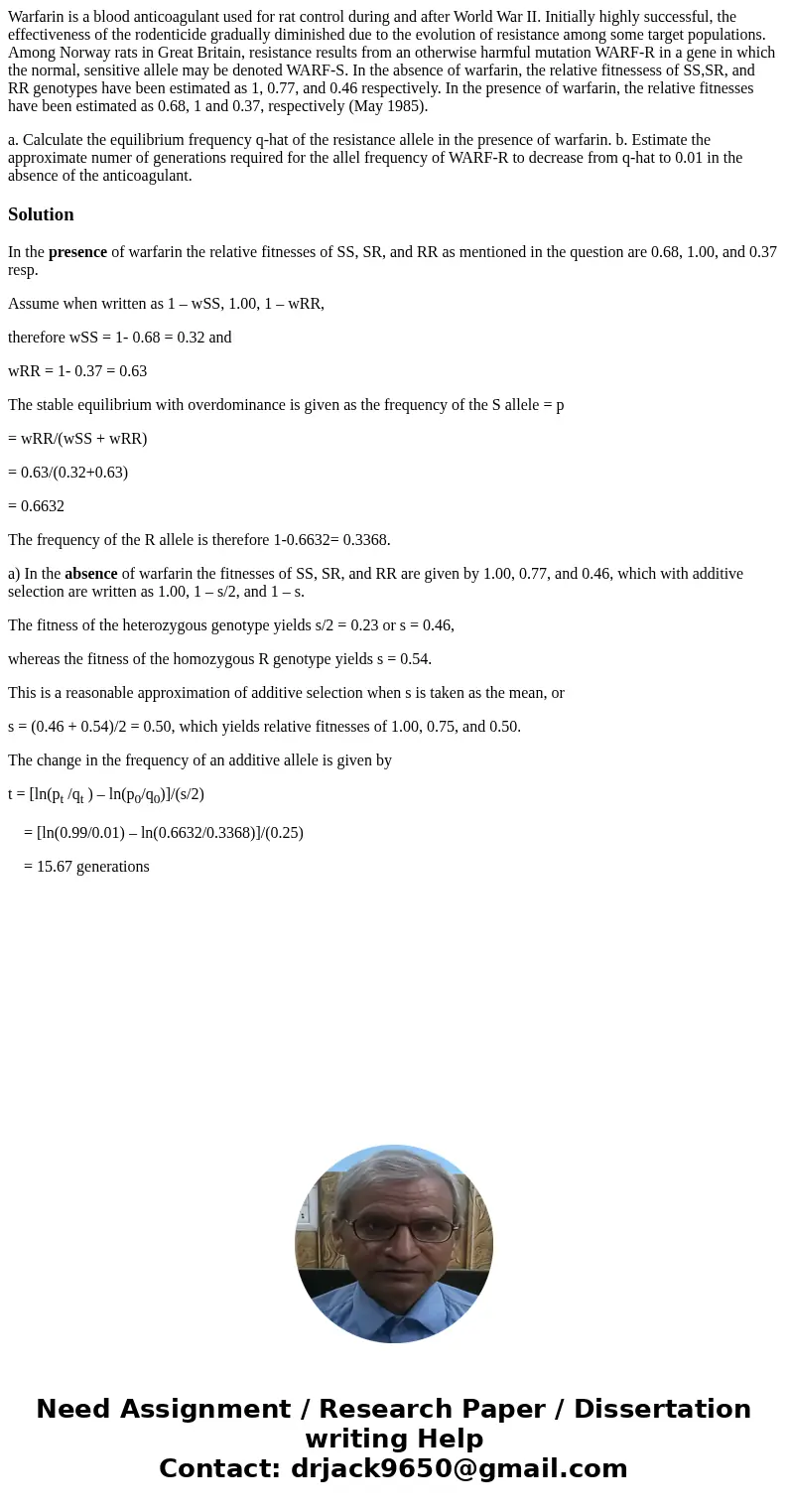Warfarin is a blood anticoagulant used for rat control durin
Warfarin is a blood anticoagulant used for rat control during and after World War II. Initially highly successful, the effectiveness of the rodenticide gradually diminished due to the evolution of resistance among some target populations. Among Norway rats in Great Britain, resistance results from an otherwise harmful mutation WARF-R in a gene in which the normal, sensitive allele may be denoted WARF-S. In the absence of warfarin, the relative fitnessess of SS,SR, and RR genotypes have been estimated as 1, 0.77, and 0.46 respectively. In the presence of warfarin, the relative fitnesses have been estimated as 0.68, 1 and 0.37, respectively (May 1985).
a. Calculate the equilibrium frequency q-hat of the resistance allele in the presence of warfarin. b. Estimate the approximate numer of generations required for the allel frequency of WARF-R to decrease from q-hat to 0.01 in the absence of the anticoagulant.
Solution
In the presence of warfarin the relative fitnesses of SS, SR, and RR as mentioned in the question are 0.68, 1.00, and 0.37 resp.
Assume when written as 1 – wSS, 1.00, 1 – wRR,
therefore wSS = 1- 0.68 = 0.32 and
wRR = 1- 0.37 = 0.63
The stable equilibrium with overdominance is given as the frequency of the S allele = p
= wRR/(wSS + wRR)
= 0.63/(0.32+0.63)
= 0.6632
The frequency of the R allele is therefore 1-0.6632= 0.3368.
a) In the absence of warfarin the fitnesses of SS, SR, and RR are given by 1.00, 0.77, and 0.46, which with additive selection are written as 1.00, 1 – s/2, and 1 – s.
The fitness of the heterozygous genotype yields s/2 = 0.23 or s = 0.46,
whereas the fitness of the homozygous R genotype yields s = 0.54.
This is a reasonable approximation of additive selection when s is taken as the mean, or
s = (0.46 + 0.54)/2 = 0.50, which yields relative fitnesses of 1.00, 0.75, and 0.50.
The change in the frequency of an additive allele is given by
t = [ln(pt /qt ) – ln(p0/q0)]/(s/2)
= [ln(0.99/0.01) – ln(0.6632/0.3368)]/(0.25)
= 15.67 generations

 Homework Sourse
Homework Sourse